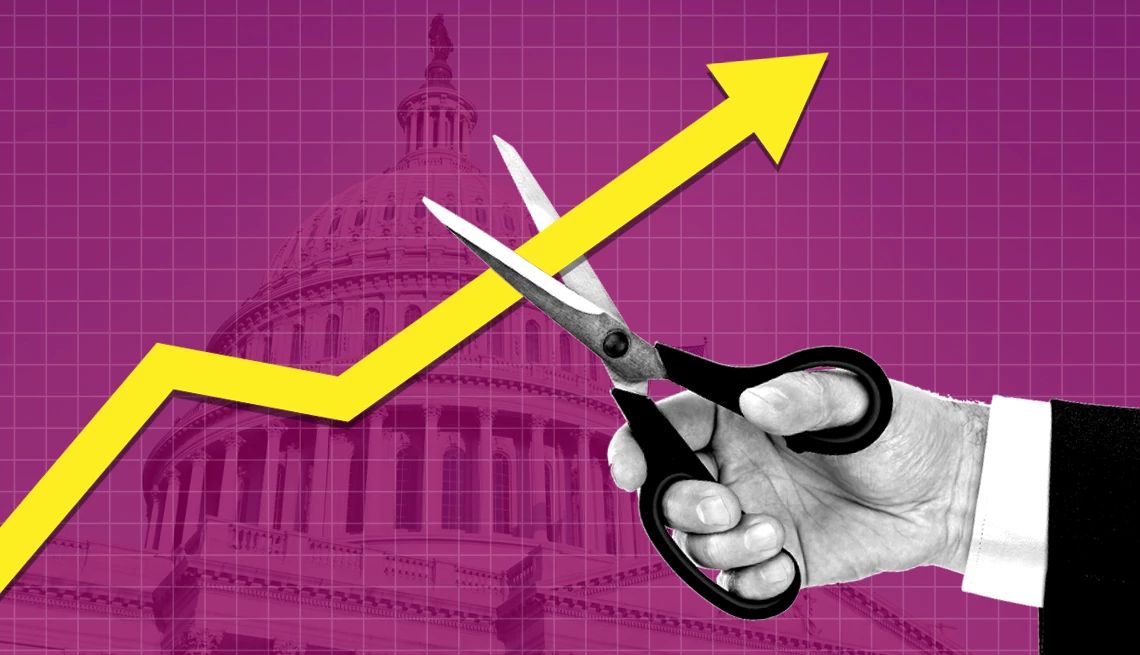AARP Hearing Center


The Federal Reserve is lowering its benchmark rate for the third time this year.
The central bank’s Federal Open Market Committee agreed at its Dec. 10 meeting to reduce the federal funds rate by a quarter percentage point to a target range of 3.5 to 3.75 percent. This widely anticipated rate cut follows two quarter-percentage-point cuts in September and October.
Although the inflation rate remains above the Fed’s target of 2 percent, policymakers appear to have lowered interest rates in response to a cooling labor market, says Sebastián Leguizamón, director of the Center of Applied Economics at Western Kentucky University.
The rate cut might be welcome news for some retirees, but not all older adults will benefit from it. “The effect is mixed and very portfolio-specific,” Leguizamón says. “So rather than cheering or booing, it’s better to think in terms of trade-offs that depend on debt levels and how a retiree’s assets are allocated.”
Here’s what to know about how retirees win and lose when interest rates fall.
Winners
Borrowers
The federal funds rate is the interest rate that financial institutions charge each other when they lend reserves overnight. Changes to this rate can have a trickle-down effect on consumers by affecting some of the interest rates they pay.
“The winners are borrowers,” says Anqi Chen, associate director of savings and household finance at the Center for Retirement Research at Boston College. But not all debt will be impacted the same way by the Fed’s rate cut.
- Credit cards: Credit card annual percentage rates had been hovering near record highs before the Fed started cutting its target rate in September but have fallen to the lowest they’ve been since April 2023. The average APR on new credit cards clocked in at 23.96 percent in December, according to LendingTree. Rates should fall within a month or two in response to the new Fed rate cut, says Matt Schulz, chief consumer finance analyst at LendingTree and author of Ask Questions, Save Money, Make More.
“The best news for cardholders is that when credit card rates fall because of the Fed, they fall for current balances as well as for new purchases,” he says.
- HELOCs: APRs on home equity lines of credit — which currently range, on average, from 8.37 percent to 9.2 percent, depending on the loan amount — should fall soon in response to the rate cut, Schulz says. Homeowners with variable-rate HELOCs will likely see their rates drop, too.
- Auto loans: Car shoppers could see a small drop in auto loan rates, which, on average, are 6.6 percent for new cars and 10.6 percent for used cars. “However, for most vehicle owners, it will take more than one small rate cut to make refinancing worth their time,” Schulz says.
- Personal loans: Rates for personal loans, which currently average 12.24 percent, should drop slightly, benefiting new borrowers. Borrowers with existing fixed-rate personal loans won’t see a change to their rate unless they refinance.
- Mortgages: The Fed’s decision to cut interest rates won’t have much of an impact on mortgage rates, which recently averaged 6.19 percent for a 30-year loan and 5.44 percent for a 15-year mortgage, according to Freddie Mac. Mortgage rates are tied more closely to the yield for 10-year Treasury bonds, which has been above 4 percent, and the Fed’s openness to cut its benchmark rate has already been priced in, Leguizamón says.


































































More From AARP
Your Secret Tax Weapon for Saving for Retirement
A health savings account can provide a source of tax-free cash
99 Great Ways to Save 2025 Edition
Stretch your dollars — and cut costs on groceries, travel, entertainment and more
What to Stop Buying Now If You’re Retired
It may be time to reconsider all the stuff you’ve been spending money on for years.